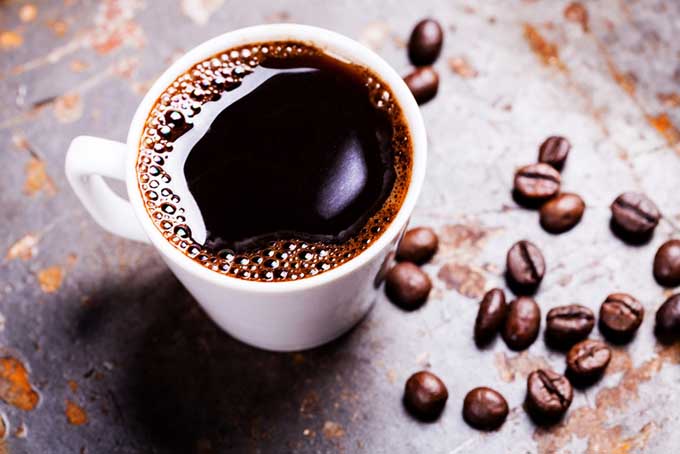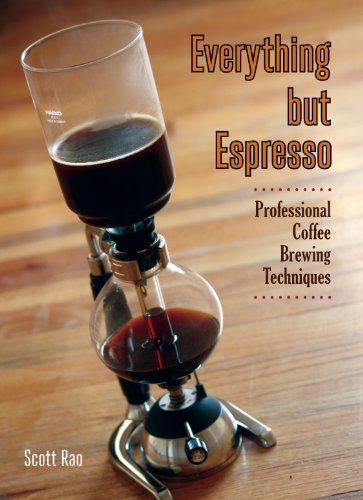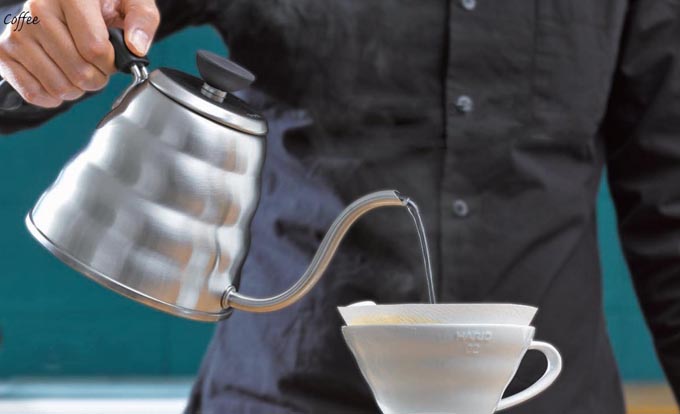Cupping, or coffee tasting, is an international practice used to discover the true profile of any particular coffee. Different types of beans offer completely different flavors and qualities than others, depending on factors such as location of origin, roast level, and age.

By using the standard method of cupping, you can rest assured that you are noticing all of the properties of a brew that you were intended to experience.
The first (and perhaps most obvious) step to the process is to choose your beans. You can use virtually any kind for this event, but a high-quality choice is obviously recommended. By tasting a wide range of coffees over time, you will be able to keenly notice and appreciate the similarities and differences between them.
A Coffee Cuppers Handbook a Systematic Guide to the Sensory Evaluation of Coffee’s Flavor
After you’ve measured out the appropriate amount (according to The Coffee Cupper’s Handbook by Ted Lingle, the correct ratio is 1.63grams of whole-beans to every ounce of water), grind the coffee on a coarse setting. After you have accomplished this step, go ahead and sniff the grounds. What do you smell? Cocoa notes? A spicy aroma?
Pressed brewing methods are very commonly used in coffee tastings; however, they are neither the “standard” nor the most effective way to brew an ideal cup for a tasting. Typically, the most encouraged procedure is as follows.
Put your coarsely ground beans into a bowl or large mug, and then add near-boiling, freshly filtered water proportionally. Let it steep for approximately four minutes.
During this time, a thick layer or crust of grinds will form on the top of your bowl. When the allotted time for infusing is over, gently break the crust and observe your coffee. The water will have affected your grounds and will have altered the results quite a bit.
What changes do you smell? What new characteristics have emerged?
At this point, after your brief observation, it is time to dispose of the grounds. You can achieve this by scooping them out of the liquid with spoons.
Some of the granules will fall to the bottom of your cup (which is fine), but those remaining on the top need to be taken out.

If you have chosen to press your coffee or to filter it by other means, make sure to pick your method wisely. Most presses tend to leave murky grit behind, while paper filters can deprive the coffee of many of its qualities.
Now that the grounds are gone, take a moment to notice the physical qualities of the coffee. What color is it? Is it a lighter color that seems to be relatively clear? Or is it a heavy-looking black?
The best part is undoubtedly saved for last. To correctly drink, you have to slurp. Although you may have been taught as a child that slurping was “bad manners,” it’s the best way to taste the true qualities and flavors of the beverage.
Make sure, as you consume the liquid, to cover your entire palate.
Where in your mouth do you feel it? Notice the body of the coffee; does it feel heavy or light? What do you taste? Hints of citrus? Sweet or spicy characteristics? Maybe it’s earthy!

Foodal recommends Everything but Espresso as your everyday brewing bible
“Professional“ cuppers ultimately use a grading scale to officially mark the qualities that a coffee has. However, another great practice is to take notes and use descriptive words or analogies.
It’s an excellent way to figure out 1) what you like, 2) why you like it, and 3) how one bean compares to another.
Don’t be afraid to describe a brew however you see fit. Whether you find it “bold” or whether you think it tastes like an old library book, there’s no incorrect way to describe what you observe. And once you’ve finished a tasting, plan your next one! It’s a great way to enjoy the unique and amazing traits of coffee.
About Kate Ackerman
A compulsive list-maker with a profound love for art, the outdoors, good beer, and Star Wars, Kate is a stereotypical Washington native (read: rain-loving coffee addict). And while she calls freelance writing her career, she's often found traveling the world, plunking on pianos, or spending time with her well-loved bulldog.




This is amazing information – I thought only professional coffee buyers went through the “cupping” process, and I didn’t know it was so easy to do at home myself. I think I need to get a hold of the Coffee Cuppers Handbook, and a few new and different varieties, and spend some time doing this. I’m an avid coffee drinker, and I would be very interested to find out how this affects my bean choices in the future.
Thank you for sharing this knowledge!
I’ve found that tasting has really helped me to understand what coffees I like and why I like them. It’s even more interesting when you can discover the characteristics that different varieties share; since cultivars from the same region tend to share traits.
I’m a bit of a coffee snob in that the smell also makes a difference. I have been to some ‘posh’ and well respected places and had to throw the cup out as it was too bitter and any drink with residue hasn’t been made with care. I only drink espresso so each sip is important and if I can’t get past the first two it goes back or gets thrown away.
It’s not quantity, but quality that matters and the aroma.
While bitterness is most often a sign of bad roasting/brewing, residue is actually caused by brewing method. A good example of this is when it is made in a press, which will always leave a trace, even when made perfectly.
Oh, I completely agree that the aroma is the thing I notice first and foremost. If coffee doesn’t smell wonderful, I don’t want it. I can usually tell when I walk into a place if I’m going to like the coffee or not. So many places it smells scorched, which generally means it’s been sitting around way too long. Don’t be afraid to ask them to make a fresh pot. I loathe when they begin pouring and I see that they’re trying to off the dregs of the pot on me. No thank you.
This is a very interesting article though. I’m always happy to learn more about coffee.
You are right on the money with the aroma @Zyni, my former work place always used to torment me as the coffee shop was downstairs while the office was upstairs, concentrating was something else… in the morning with that aroma wafting in the office, i had to have a cup of that freshly-made, hot coffee 🙂 …fortunately, they always made it to perfection…no dregs 😉
Wow. I always thought only professional tasters get to do the cupping process. I’m sharing this article with my friends. The next time they come over for book club, we are going to have our very own tasting party. I’m going to remember to slurp. Who cares if it’s not the norm? Could you tell me which kinds of coffee beans a beginner should be trying? I’m thinking of getting this book you recommended as well. Thanks for the info.
Hi @raidermari! I’m sorry that this reply is getting to you so late; I was offline for a couple of weeks.
That said, any kind is good for a beginner! I’ve met some newbies who immediately fall in love with dark roasts or varieties from a certain region and others who find that they prefer lighter or more acidic blends; it’s all up to you.
However, it never hurts to start with a medium level (especially if you’re sharing in the experience with other people), since it’s the in-between. From there, you can decide what characteristics you like.
Obviously, lighter blends tend to be more mild (but contain more caffeine) while darker varieties have stronger flavors. Cultivars from different regions also differ in characteristics; most beans that hail from Latin America have more acidity while blends from African regions will have earthier notes.
Hope this helps! Happy slurping (it’s the funnest part)!
Coffee drinking as well as tea drinking seem to have so many interesting nuances to up the taste ante. I absolutely love the idea of slurping. You really do aerate the whatever it is in your mouth (coffee, tea, soup) & taste it much more vividly.
It’s so true! It also helps you to identify which part of the palate the brew lingers on.
I absolutely agree, the aroma is the first thing I notice and if it doesn’t smell appealing then I don’t want it. I had no idea there was a certain way to taste coffee, Ive definitely never heard of slurping but I’ll be trying that from now on.
It’s just like wine tasting really, isn’t it! I’ve been in Starbucks whilst they were holding a tasting event and the baristas expained the “correct” way to taste the coffee and I have to say, it was quite enlightening. Prior to this, I just used to classify coffees as “bitter” or “nice”.
I was a barista for six years and learned so much about coffee/the tasting process. (I was a “bitter” or “nice” java drinker prior to that stage in my life.) I hope you’ve found a new love for slurping!
I know more about coffee than the average person and have often wanted to delve more into it but did not know how quite to approach it. Your information is well received because it gives me a place to start. And how fun that the first step is slurping! 🙂
I’m so glad this article helped! If you have any suggestions for future articles/topics that you’d like to learn more about, please don’t hesitate to throw some ideas my way. I love hearing from informed-but-still-learning readers!
I absolutely love coffee, and I always wondered how one gets the “flavor profile.” Obviously, some varieties are extremely easy to pick up on the different tastes, especially flavored versions from Starbucks, Barnie’s, etc. Others are also easier as you can smell the nutty aroma while brewing, no matter how far away you happen to be from the pot; the smell tends to fill the entire house. 😀 I’ll definitely have to try this one day when I have the spare time, thank you!